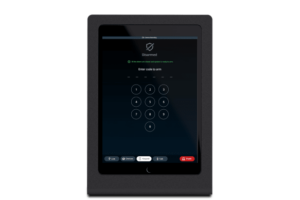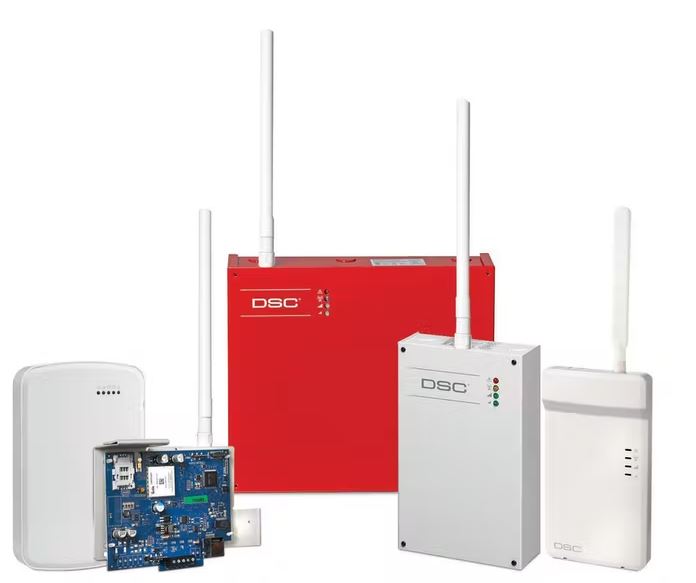I. Introduction
In our increasingly interconnected world, the significance of robust security measures, such as different types of security alarms, cannot be overstated. Alarm systems, the silent guardians of our digital and physical assets, play a pivotal role in deterring unauthorized access and ensuring the safety of our environments. This guide, brought to you by BCS Consultants, delves into the essence of alarm systems, shedding light on their critical role in bolstering security across various settings, encompassing a wide range of security alarm systems to cater to diverse needs.
II. Basic Alarm Systems
A. Definition and Purpose
Designed to identify and alert to potential security breaches or dangers, alarm systems serve a dual purpose. Firstly, they act as a deterrent, signaling potential intruders that their presence is detected. Secondly, they immediately notify authorities or designated stakeholders, facilitating a prompt response to mitigate any potential loss or damage. This rapid alert mechanism is crucial in scenarios where time is of the essence, such as in the case of unauthorized entry or emergent threats.
B. Components and Features
- Sensors: These are strategically placed to detect any signs of intrusion or irregular activity. Motion detectors, door/window contact sensors, and glass break detectors are typical examples designed to sense different physical actions or presences.
- Control Panels: The control panel coordinates the system's activities. It processes signals from the sensors to determine the presence of a threat and initiates the appropriate alert or alarm.
- Alerting Mechanisms: These mechanisms notify relevant parties of a detected threat. This can range from loud sirens and flashing lights designed to scare off intruders and alert occupants to silent alerts sent directly to a security team or monitoring service.
C. Common Applications in IT Environments
- Server Room Security: Basic alarm systems monitor for unauthorized entry in server rooms, ensuring that only authorized personnel can access sensitive equipment and data. This helps in safeguarding against data theft, vandalism, or accidental damage.
- Data Protection: By alerting to potential security breaches, these alarm systems play a crucial role in an organization's broader data security strategy. They act as an early warning system, enabling rapid response to secure data before it can be compromised.
- Compliance and Risk Management: Many industries are governed by regulations requiring the protection of sensitive data. Basic alarm systems help organizations comply with these regulations by providing a layer of security that can be monitored and audited.
III. Intrusion Detection Systems (IDS)
A. Explanation of IDS
Intrusion Detection Systems (IDS) are a sophisticated frontier in security systems, designed meticulously to identify, detect, and analyze any unauthorized access or anomalies that may occur within network traffic and system activities.
B. How IDS Works
The operation of IDS tools is a marvel of modern technology, integrating seamlessly into a security alarm system to provide a comprehensive shield against cyber intrusion. These systems continuously monitor network and system operations, vigilantly comparing every data byte against an extensive database of known threat signatures and anomalous patterns.
C. Applications in IT and Business Settings
The deployment of IDS is critical across both IT infrastructures and business landscapes to fend off cyber-attacks, safeguarding the very backbone of our digital economy—the integrity and confidentiality of data. In corporate environments, where data is as valuable as currency, IDS plays a pivotal role in fortifying defenses, not just as a deterrent but as a proactive measure to anticipate and neutralize threats.
IV. Fire Alarm Systems
A. Importance of Fire Alarm Systems
Fire alarm systems are an indispensable component of any comprehensive security strategy, offering the first line of defense in the early detection and response to fire incidents. Their role extends beyond mere notification; they are a critical part of emergency response protocols, providing the necessary lead time to evacuate, control, and ultimately minimize the impact of fires.
B. Components and Types of Fire Alarms
The architecture of fire alarm systems is diverse, ranging from basic smoke detectors that offer simple alerts to more advanced solutions that integrate smoke, heat, and carbon monoxide sensors. This spectrum of systems is designed to meet a wide array of requirements and settings, ensuring that there is a fit-for-purpose solution for every scenario. Whether it's a residential building, a commercial complex, or an industrial facility, the choice of fire alarm system plays a crucial role in the overall safety and preparedness strategy.
C. Integration with Other Alarm Systems
The synergy achieved by integrating fire alarm systems with other security solutions can significantly enhance the overall safety of a premise. This holistic approach allows for a coordinated and comprehensive response to emergencies, ensuring that all security aspects work together. The benefits of such integration include streamlined communication between different alarm systems, improved situational awareness, and a more effective mobilization of emergency response efforts.

V. Access Control Systems
A. Overview of Access Control Systems
Access control systems represent a critical security layer regulating entry and access within specified areas. These systems are the gatekeepers of physical and information security, ensuring that only authorized personnel can access sensitive or restricted areas. By controlling what enters and exits, these systems play a pivotal role in safeguarding assets, information, and people.
B. Benefits for IT Professionals and Facility Managers
For IT professionals and facility managers, access control systems offer a robust solution for enhancing security posture and managing risks associated with unauthorized access. These systems enable precise control over access rights, significantly mitigating the risk of data breaches, theft, or sabotage. Access control systems can also be integrated with other security measures to create a layered defense strategy, further bolstering the security of facilities and information systems.
C. Integration with IT Infrastructure
The seamless integration of access control systems with IT infrastructure is a testament to the adaptability and sophistication of modern security solutions. This integration allows centralized access rights management, streamlined security operations, and enhanced monitoring capabilities.
VI. Environmental Monitoring Systems
A. Definition and Purpose
While not traditionally categorized under security alarms, environmental monitoring systems play a crucial role in the comprehensive approach to securing IT equipment and infrastructure. These systems are designed to continuously monitor and report on environmental conditions such as temperature, humidity, and water presence, which can significantly impact the performance and longevity of IT equipment.
B. Applications in Data Centers and IT Environments
In data centers and IT environments, the stability of environmental conditions is paramount for ensuring the uninterrupted operation of critical systems. Environmental monitoring systems enable facility managers to maintain optimal conditions, preventing equipment failure due to overheating, moisture, or other environmental factors.
C. Importance for Facility Managers
For facility managers, environmental monitoring systems provide invaluable insights into the conditions of their managed spaces. These systems empower managers with real-time data, enabling them to make informed decisions and take preemptive actions to mitigate risks associated with adverse environmental conditions.
VII. Video Surveillance Systems
A. Role of Video Surveillance in Security
Video surveillance systems play a dual role in the security strategy of any organization or facility. As a deterrent, they can significantly reduce the likelihood of criminal activities by signaling to potential intruders that their actions are being monitored and recorded. As a means of evidence collection, they provide irrefutable documentation of incidents, aiding in the investigation and resolution of security breaches.
B. Types of Video Surveillance Technologies
The landscape of video surveillance technologies has evolved dramatically, offering a range of options from traditional CCTV systems to advanced IP cameras and AI-enhanced analytics. This diversity in technology caters to a wide spectrum of security needs, allowing for tailored solutions that provide high-definition video, facial recognition, and real-time alerts.
C. Use Cases for Remote Teams and Business Owners
For remote teams and business owners, video surveillance systems offer a way to maintain security and oversight of premises and assets from afar. This capability is precious in today's increasingly remote and digital workplace, providing business owners and managers with peace of mind knowing that their investments are under vigilant watch. Video surveillance can also facilitate remote operations, monitoring business activities, employee safety, and customer interactions, ensuring operational continuity and security.
VIII. Alarm System Integration
A. Importance of Integration for Comprehensive Security
Integrating various alarm and security systems ensures that all security infrastructure components work harmoniously, providing a seamless defense against multiple threats. They can share information and trigger coordinated responses, enhancing the effectiveness of security measures and reducing the likelihood of breaches.
B. Challenges and Solutions for Integration
While integrating diverse alarm systems offers significant benefits, it also presents challenges, such as compatibility issues and the complexity of managing interconnected systems. However, technological advancements and the development of standards for interoperability have greatly facilitated the integration process. Solutions such as universal control platforms and cloud-based management systems now enable a more streamlined and efficient integration of various types of security systems, overcoming previous obstacles and enhancing the overall security posture.
IX. Future Trends in Alarm Systems
A. Emerging Technologies in Alarm Systems
The future of alarm systems is shaped by the rapid advancement of technologies such as artificial intelligence (AI), machine learning, and the Internet of Things (IoT). These innovations promise to revolutionize the field of security alarms, introducing new capabilities such as predictive analytics, automated threat detection, and intelligent response mechanisms.
B. Impact on IT Professionals and Business Security
For IT professionals and businesses, emerging advanced alarm technologies represent both an opportunity and a challenge. These advancements have the potential to significantly elevate the efficiency and effectiveness of security strategies, offering more sophisticated tools to protect against the ever-evolving landscape of cyber threats.
C. Recommendations for Staying Ahead of Trends
Organizations and professionals must stay informed about the latest developments and trends to effectively leverage emerging technologies' benefits in alarm systems. This involves continuous learning, experimentation, and adaptation to incorporate new technologies into security strategies.

X. Conclusion
With the guidance of BCS Consultants, selecting the right alarm system tailored to specific needs has never been more crucial. From basic alarm systems to sophisticated integrated solutions, the landscape of alarm systems, including various types of security alarms, is evolving rapidly. Embracing these advancements is key to safeguarding our digital and physical realms against the myriad of threats. As we continue to navigate this ever-changing landscape, the role of alarm systems in ensuring security and peace of mind remains paramount, with BCS Consultants at the forefront of delivering cutting-edge solutions. Call us at +1 949-333-1000 for more information on different alarm systems.
FAQs
FAQ 1: Can alarm systems be customized for small businesses or residential properties?
Answer: Absolutely! Alarm systems come in various configurations and can be tailored to meet small businesses' and residential properties' specific security needs. Whether it's incorporating motion sensors for a boutique shop or integrating smoke detectors and carbon monoxide sensors for a home, there's a customizable solution that can provide optimal protection tailored to the size and scope of any property.
FAQ 2: How do modern alarm systems contribute to energy efficiency?
Answer: Modern alarm systems often include smart technology that enhances security and promotes energy efficiency. For example, integrated systems can control lighting, heating, and cooling based on occupancy or time of day, significantly reducing energy consumption and costs. Environmental monitoring systems also play a part by ensuring that IT equipment operates within optimal temperature ranges, preventing overcooling or overheating and thus saving energy.
FAQ 3: What role does cloud technology play in the evolution of alarm systems?
Answer: Cloud technology revolutionizes alarm systems by offering enhanced data storage, remote access, and real-time monitoring capabilities. With cloud-based systems, security updates and backups can be managed automatically, ensuring the system is always up-to-date with the latest security protocols. Additionally, cloud integration allows users to monitor their security systems from anywhere in the world, providing added convenience and peace of mind.


You must be logged in to post a comment.